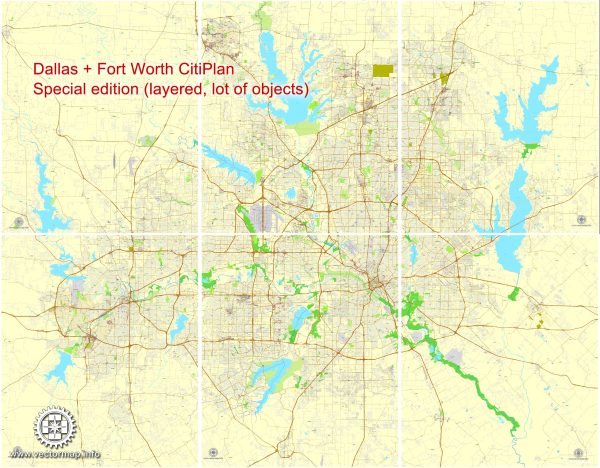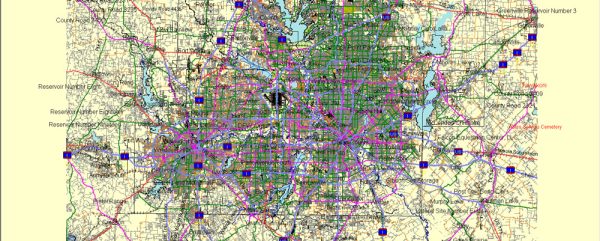The Dallas-Fort Worth (DFW) metropolitan area in Texas has a rich history of urban development that has played a significant role in shaping the region into one of the largest and fastest-growing metropolitan areas in the United States. Here is a brief overview of the history of urban development in the DFW area:
- Early Settlement and Growth:
- The history of the DFW area dates back to the mid-19th century when it was primarily a rural and agricultural region.
- The establishment of Fort Worth in 1849 and Dallas in 1856 contributed to the early growth of the area. These forts were initially built for protection during the Mexican-American War.
- The completion of the Texas and Pacific Railway in the 1870s further fueled economic development and population growth.
- Railroad Expansion:
- Railroads played a crucial role in the urban development of DFW. They facilitated transportation of goods and people, connecting the area to other parts of Texas and the country.
- The growth of railroads led to the establishment of various rail hubs, contributing to the economic prosperity of cities like Dallas and Fort Worth.
- Oil Boom:
- The discovery of oil in the early 20th century, particularly the East Texas Oil Field in the 1930s, had a profound impact on the region’s economy.
- The oil boom brought significant wealth and population growth to DFW, transforming it into a major business and financial center.
- Aviation Industry:
- The establishment of Love Field in Dallas and Meacham Field in Fort Worth during the early 20th century marked the beginning of the area’s prominence in the aviation industry.
- The growth of aviation further solidified DFW’s position as a major economic hub.
- Post-WWII Suburbanization:
- After World War II, there was a trend of suburbanization as people moved away from the city centers to newly developed suburban areas.
- The construction of highways and the availability of affordable housing in the suburbs contributed to the expansion of the metropolitan area.
- Economic Diversification:
- Over the decades, the DFW area diversified its economy beyond oil and agriculture. It became a hub for technology, telecommunications, finance, and other industries.
- The establishment of major corporations and the growth of the Dallas and Fort Worth International Airports further propelled economic development.
- Urban Renewal and Redevelopment:
- In the mid-20th century, both Dallas and Fort Worth underwent urban renewal projects to revitalize their downtown areas.
- The construction of iconic structures such as Reunion Tower in Dallas and Sundance Square in Fort Worth symbolized the commitment to urban redevelopment.
- Population Growth and Modernization:
- In recent decades, DFW has experienced significant population growth, making it one of the fastest-growing metropolitan areas in the United States.
- The region has embraced modern urban development trends, including the construction of mixed-use developments, cultural institutions, and sports facilities.
- Transportation Infrastructure:
- DFW’s transportation infrastructure has continuously evolved, with the expansion of highways, development of public transportation systems, and the importance of DFW International Airport as a major global hub.
Today, the Dallas-Fort Worth metropolitan area stands as a dynamic and diverse urban center, with a robust economy, cultural amenities, and a rapidly expanding population. The history of its urban development reflects a combination of economic, social, and technological factors that have shaped the region into what it is today.



 Author: Kirill Shrayber, Ph.D.
Author: Kirill Shrayber, Ph.D.